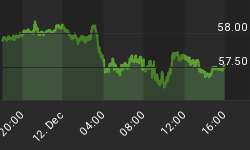Forward S&P 500 earnings estimates are outrageously optimistic as noted in Hussman on Misallocating Resources, Market Valuations, Earnings Estimates, and Public Policy.
The above link addresses what is happening. This post will address the reasons why.
Reasons for Nonsensical Earnings Estimates
- Analysts do not do their homework on what is really happening and why. Instead they see rising earnings and take them at face value, nearly always figuring following quarters will be better yet.
- Analysts do not understand the dynamics of debt deflation, peak credit, the baby boomer retirement dynamics, etc. In short, Analysts do not understand the global macro picture is bleak.
- Analysts look at a steep yield curve and think the Fed can lift the economy.
- Analysts have not yet caught on to the fact that consumer spending and bank lending attitudes have changed for good.
- Analysts in general have a vested interest in getting the public to buy stocks, annuities, etc. because that is how they make money.
US Banking Earnings are a Sham
David Stevenson at MoneyWeek addresses the first bullet point above quite nicely. Please consider The US banking recovery is a sham.
Let's hear it for the bankers!
There may be plenty of gloom gathering elsewhere. But the moneylenders - or some of them at least - seem to be doing very nicely. For example, US giant JP Morgan Chase has just revealed a staggering 76% jump in its second-quarter profits.
What's more, it's part of a steadily rising trend in improved results.
The chart below shows JPMorgan's recent quarterly profits. These have now climbed right back to 2007's high point. That's nothing short of amazing. And it's more than enough to get bank bulls quite excited again.
But hang on a minute. Maybe there's a con trick being played here.
For one thing, JP Morgan hasn't achieved any 'real' growth. The bank's revenues actually fell by 8%. Investment banking and fixed-income trading results both dropped.
So where did all the money come from?
The figures aren't as good as they first seemWell, the bank only turned in such a 'good' result because it slashed its "provision for credit losses" by two thirds, from $9.7bn to $3.4bn. In other words, all (and more) of JP Morgan's latest profit was due to the bank making a much lower allowance for bad debts - loans that could go sour because the debtors can't repay to the bank the money they've borrowed.
But this isn't just about bad debts - or JP Morgan. As Bradley Keoun and David Henry at Bloomberg point out, other US banks will be pulling strings to make their results look good: "Bank of America and Wall Street firms are now depending on an accounting benefit last used in the depths of the credit crisis to prop up their results".
New accounting rules artificially inflate earningsThe arcane-sounding FASB 157 rule may seem deadly dull, but for bankers it's very important - and very controversial, too. Here's how it works. When banks want to borrow money, they often do so by selling bonds. These are in effect IOUs. FASB 157 lets these banks pretend they'll buy back their IOUs at current market rates, even though they may have no real intention of doing so.
Now let's say that a bank's IOUs drop in price - for example, because it's reckoned by the market to be dodgier than was previously thought, meaning that the risk of holding those IOUs rises.
Although the face value - the actual amount owed on the IOUs - stays the same, the bank is now allowed to assume that it owes less money to its creditors. So it can book the difference between the previous IOU value and the current, lower price as a profit.
Bank of America, the biggest US bank by assets, may record a $1bn second-quarter gain from writing down its debts to their market value, says Keith Horowitz at Citigroup. Morgan Stanley will also probably record $1bn in such debt valuation adjustments in the second quarter, he says, equal to 60% of his estimate for the firm's pre-tax income.
Chris Kotowski at Oppenheimer is very clear what this really means. It's an accounting "abomination", he says, because fluctuations in the value of the debt don't change the amount the banks owe.
Accounting "Abomination"
Any person reading this now understands what an accounting "abomination" FASB 157 created.
However, analysts don't know that or they simply do not care. As as noted in the 5th bullet point at the top, sell-side analysts have a vested interest in not knowing or not caring about these kinds of abominations.
This explains how forward earnings estimates have been ridiculously ratcheted back up to 2007 highs. To top it off, not only are the forward earnings estimates a sham, this quarter's bank earnings estimates are a sham as well.
When pondering analysts forward earnings estimates, please factor in the Consumption Inflection Point - No One Wants Credit; Consumer Spending Plans Plunge.
Moreover, please note the case for a Second-Half Housing and Durable Goods Crash.
The hook has been set. Stocks look "cheap" based on continually upgraded forward earnings estimates, yet those estimates are highly unlikely to say the least.

















